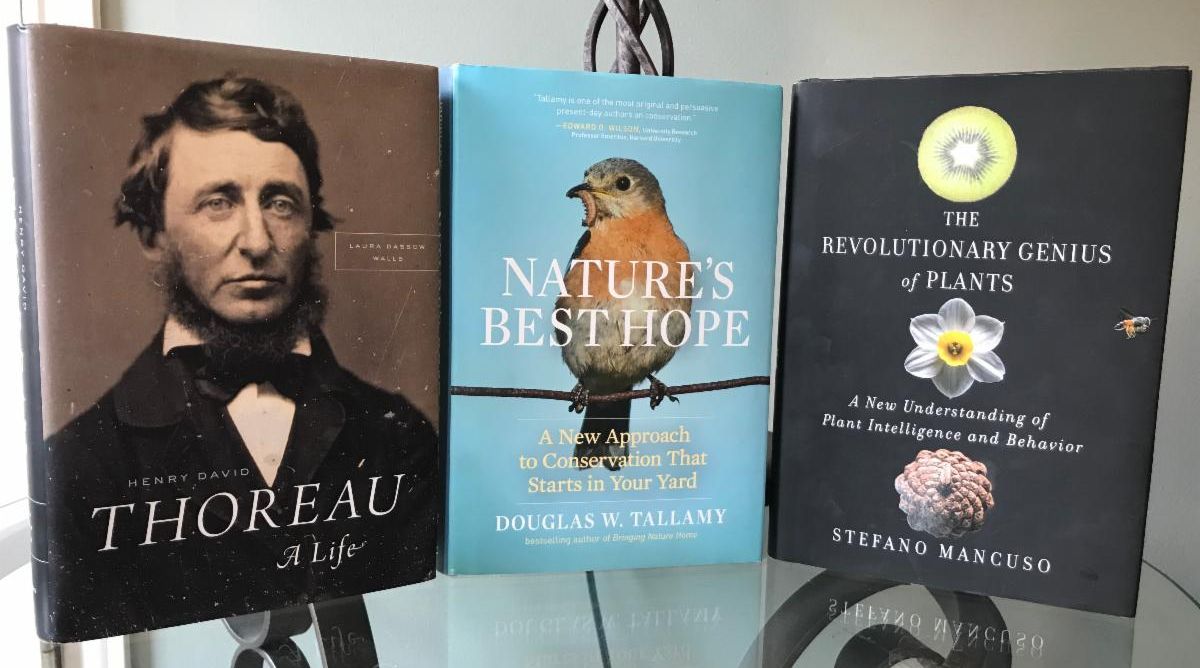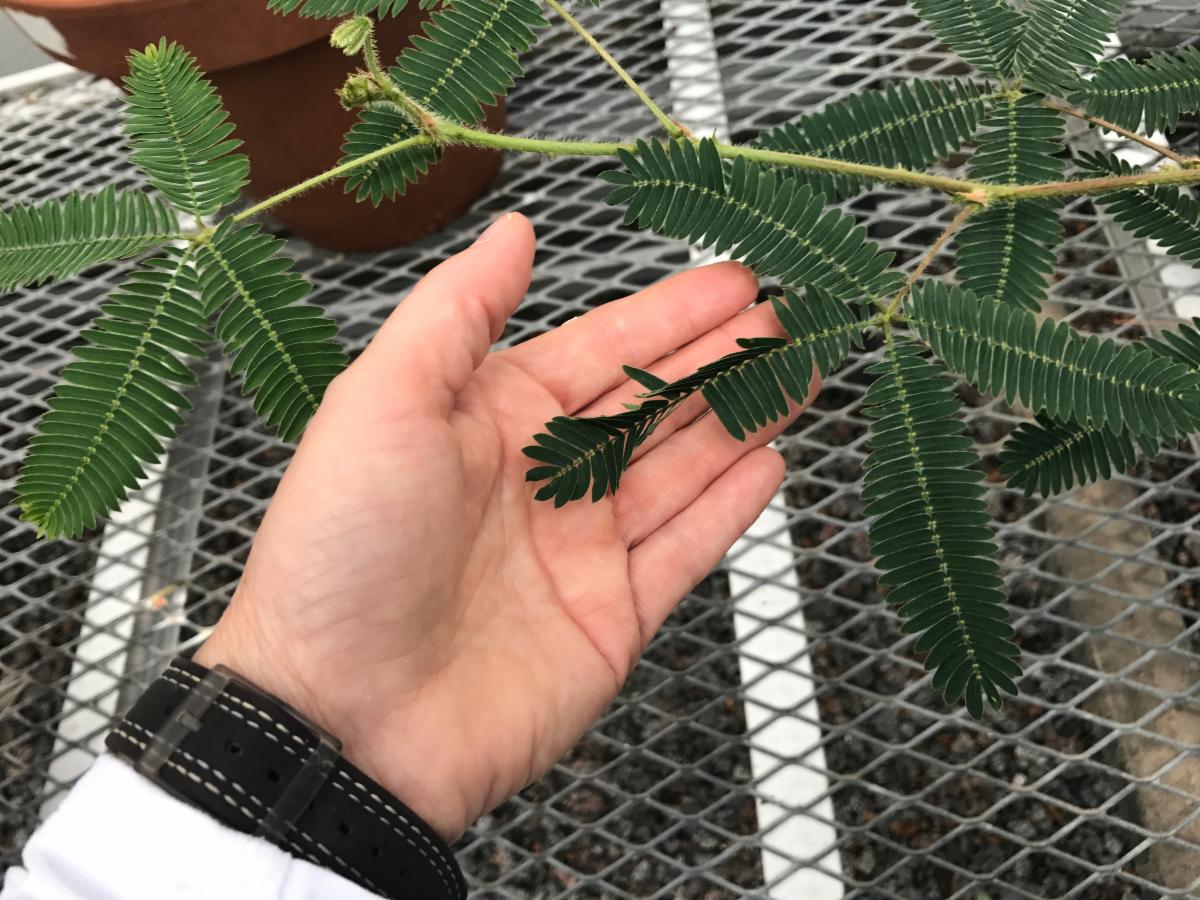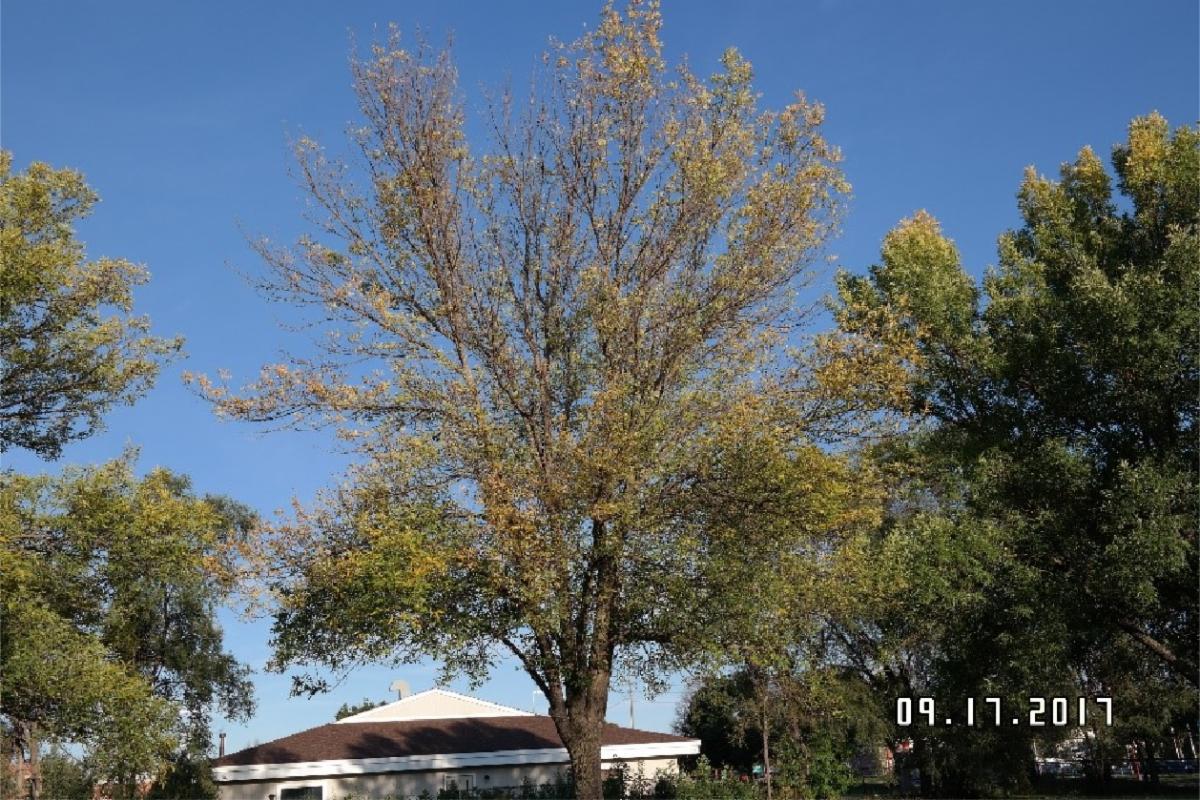|
1 cup lard or suet
1 cup peanut butter
2 cups quick oats
2 cups cornmeal
1 cup flour
1/3 cup sugar
Melt shortening with peanut butter, then turn off the heat. Add the other ingredients, along with anything else that seems appropriate (bird seed, raisins, chopped nuts, etc.).
Spread in a pan, let the mixture cool, then cut into chunks and freeze. This can be put in a suet cage or platform feeder. |
|
|
A Quarantine Reading List
|
|
| |
|
Books are essential cargo when you are coping with stress, below are a few of my recommendations for reading during this pandemic.

Thoreau: A Life
by Laura Dassow Walls, 2017
Thoreau's two-year-plus experiment in self-isolation is a condition many of us are experiencing during the present pandemic moment. And we can learn a lot from what Thoreau created from it: constructive solitude.
But if the Walden cabin, about the size of a garden shed, was in some sense a retreat, a refuge from "the noise of my contemporaries," it had many more positive functions: it was a studio, a laboratory, an observatory, and a watchtower.
Reading
Thoreau- A Life
as I have done these last weeks, I sense that Thoreau viewed the Walden outpost less as a defensive necessity than as a place of opportunity where he could do what he could not easily do in the everyday world, namely, concentrate and focus.
Two hundred years after his birth and two generations after the last full-scale biography, Walls renews Henry David Thoreau for us in all his profound, inspiring complexity.

Thoreau's bed and chair from the hut at Walden Pond, which was about the size of a garden shed.
Nature's Best Hope
by Douglas W. Tallamy, 2019
In his new book, Tallamy outlines his vision that our efforts as individuals will determine whether we live in a world thriving with life or in one which little stirs.
Nature's Best Hope
shows how homeowners everywhere can turn their yards, decks or abandoned spaces into conservation corridors that provide wildlife habitats.
Envision your property, he writes, "as one small piece of a giant puzzle, which, when assembled, has the potential to form a beautiful ecological picture." He calls it the Homegrown
National Park
.
Tallamy tells fascinating stories of the specialized relationships among plants, insects and animals, but also lays the building blocks for understanding the natural world. Even more important, it's practical, effective and easy. You will walk away with specific suggestions you can incorporate into your own yard.
Creating a "pocket prairie" from a 20 x 20 x 20 foot patch of grass.
In a few short weeks, the garden is both beautiful and serves important ecosystem needs. Birds, butterflies, bees and countless insects are now visitors to the garden. So are my neighbors.
The Revolutionary Genius of Plants
,
by Stefano Mancuso 2017
Do plants have intelligence? Do they have memory? Are they better problem solvers than people? Mancuso, one of the world's foremost experts on plant neurobiology, reveals the surprisingly sophisticated ability of plants to innovate, to remember, and to learn. He highlights the creative solutions plants offer to the most vexing problems that face us today. Despite not having brains or central nervous systems, plants perceive their surroundings with an even greater s
ensitivity than animals. They efficiently explore and react promptly to potentially damaging external events thanks to their cooperative, shared systems, without any central command centers. "
I define it very simply,"
Mancuso said.
"Intelligence is the ability to solve problems."

When the fernlike leaves of the mimosa are touched, they instantly fold up, presumably to frighten insects. The mimosa also collapses its leaves when the plant is dropped or jostled.
|
|
The Disease We Spread too Far
|
|
No one is exactly sure when emerald ash borer (EAB) got started here and from what small geographical location it escaped from - but it came from Asia and has caused hundreds of millions of tree deaths throughout the United States. Minnesota alone is home to an estimated one billion ash trees. If only we'd had the sense not to let it gain access to international travel routes - but it's too late now.
In 2002, when this tree-killing pandemic was first discovered, the government made a five-year plan to slow the spread of the disease. I was skeptical that this was possible for a minute beetle that can be anywhere in the world in just one day. My skepticism was soon validated by its spread across the country in just a few short years: it couldn't have been slowed or stopped...
And no, our cold winters will not keep this beetle at bay. The last time cold weather had such a significant impact on EAB in Minnesota was during the 2013/2014 winter when an estimated 60-70% of larvae were killed in the Twin Cities area. While the occasional cold winter is probably helping to slow the spread of EAB in Minnesota and delay impacts for infested areas, cold temperatures do not solve the problem. In each infested area, at least some portion of the population survived and populations will quickly rebound over the next couple of years if we don't see the same cold temperatures.
If you have a healthy ash that you want to keep - treat it this spring, if you did not do so last year. The most effective time to inject ash trees is spring, once the leaves open, until mid-summer. Once we get to the end of the summer, most treatments are less effective and should be delayed until the following spring. There are several reasons for the limited effectiveness to fall applications. First, fall larvae are large and it takes a high concentration to kill them (but not the younger, smaller larvae in June and July); second, the fall larvae are not going to ingest any chemical. It may be best just to wait to inject next spring.
My city is tagging infested trees and mandating their removal. This is the most expensive way to manage the disease. By the time the tree is tagged, treatment is no longer allowed and the tree must be removed. This is unfortunate as I have found some infested trees can recover with the treatment.
The galleries in this ash stem, ironically, are caused by a beetle that's creating a pandemic.
This ash tree has been under EAB treatment since 2015 and is still going strong today.

Nearby, an untreated ash tree is in severe decline from EAB. Notice the pictures were taken the same day. Later this tree was tagged and removed.
|

Thanks for reading.
Happy Planting!
Faith Faith Appelquist President & Founder
|
|
|